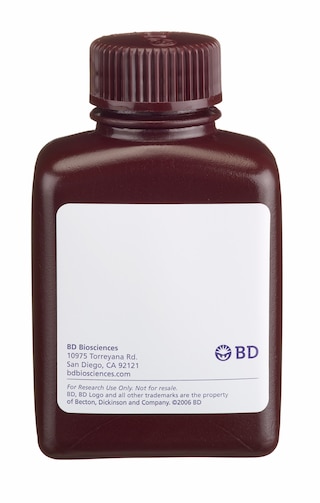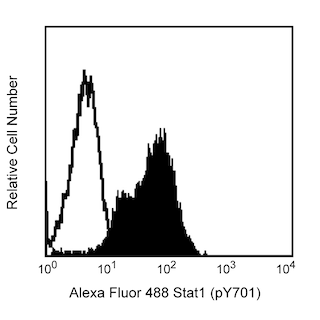-
Reagents
- Flow Cytometry Reagents
-
Western Blotting and Molecular Reagents
- Immunoassay Reagents
-
Single-Cell Multiomics Reagents
- BD® OMICS-Guard Sample Preservation Buffer
- BD® AbSeq Assay
- BD® OMICS-One Immune Profiler Protein Panel
- BD® Single-Cell Multiplexing Kit
- BD Rhapsody™ ATAC-Seq Assays
- BD Rhapsody™ Whole Transcriptome Analysis (WTA) Amplification Kit
- BD Rhapsody™ TCR/BCR Next Multiomic Assays
- BD Rhapsody™ Targeted mRNA Kits
- BD Rhapsody™ Accessory Kits
-
Functional Assays
-
Microscopy and Imaging Reagents
-
Cell Preparation and Separation Reagents
-
- BD® OMICS-Guard Sample Preservation Buffer
- BD® AbSeq Assay
- BD® OMICS-One Immune Profiler Protein Panel
- BD® Single-Cell Multiplexing Kit
- BD Rhapsody™ ATAC-Seq Assays
- BD Rhapsody™ Whole Transcriptome Analysis (WTA) Amplification Kit
- BD Rhapsody™ TCR/BCR Next Multiomic Assays
- BD Rhapsody™ Targeted mRNA Kits
- BD Rhapsody™ Accessory Kits
- United States (English)
-
Change country/language
Old Browser
This page has been recently translated and is available in French now.
Looks like you're visiting us from {countryName}.
Would you like to stay on the current country site or be switched to your country?




Flow cytometry and Immunoflourescent analysis of Cytokeratin 14, 15, 16 and 19 in human A431 cells. (Left Panel) Human A431 (Human epithelial carcinoma; ATCC CRL-1555) cell line were fixed with a 1% solution of paraformaldehyde and permeabilized with 0.1% Triton™ X-100. The cells were washed with BD Pharmingen™ Stain Buffer (FBS) (Cat. No. 554656) and then stained with either Alexa Fluor® 647 Mouse IgG1 κ Isotype Control (Cat. No. 557732/557783; dashed line histogram) or Alexa Fluor® 647 Mouse Anti-Human Cytokeratin 14, 15, 16 and 19 antibody (Cat. No. 563648; solid line histogram). The fluorescence histograms were derived from gated events with the forward and side light-scatter characteristics of intact A431 cells. Flow cytometric analysis was performed using a BD™ LSR II Flow Cytometer System. (Right Panel) Human A431 cells (Human epithelial carcinoma; ATCC CRL-1555) were fixed with BD Cytofix™ Fixation Buffer (Cat. No. 554655), permeabilized with 0.1% Triton™ X-100 buffer, and stained with Alexa Fluor® 647 Mouse Anti-Human Cytokeratin 14, 15, 16 and 19 monoclonal antibody (Cat. No. 563648; pseudo-colored red). The counter-staining of cell nuclei was with BD Pharmingen™ DAPI Solution (pseudo-colored blue)(Cat. No.564907). The images were captured on a BD Pathway™ 435 Cell Analyzer and merged using BD Attovision™ software. Permeabilization with BD Perm/Wash™ (Cat No. 554723) or BD Phosflow™ Perm Buffer III (Cat. No. 558050) is also suitable for use with this antibody.


BD Pharmingen™ Alexa Fluor® 647 Mouse Anti-Human Cytokeratin 14, 15, 16 and 19

Regulatory Status Legend
Any use of products other than the permitted use without the express written authorization of Becton, Dickinson and Company is strictly prohibited.
Preparation And Storage
Product Notices
- This reagent has been pre-diluted for use at the recommended Volume per Test. We typically use 1 × 10^6 cells in a 100-µl experimental sample (a test).
- An isotype control should be used at the same concentration as the antibody of interest.
- Caution: Sodium azide yields highly toxic hydrazoic acid under acidic conditions. Dilute azide compounds in running water before discarding to avoid accumulation of potentially explosive deposits in plumbing.
- Source of all serum proteins is from USDA inspected abattoirs located in the United States.
- Alexa Fluor® 647 fluorochrome emission is collected at the same instrument settings as for allophycocyanin (APC).
- The Alexa Fluor®, Pacific Blue™, and Cascade Blue® dye antibody conjugates in this product are sold under license from Molecular Probes, Inc. for research use only, excluding use in combination with microarrays, or as analyte specific reagents. The Alexa Fluor® dyes (except for Alexa Fluor® 430), Pacific Blue™ dye, and Cascade Blue® dye are covered by pending and issued patents.
- Alexa Fluor® is a registered trademark of Molecular Probes, Inc., Eugene, OR.
- Triton is a trademark of the Dow Chemical Company.
- For fluorochrome spectra and suitable instrument settings, please refer to our Multicolor Flow Cytometry web page at www.bdbiosciences.com/colors.
- Please refer to www.bdbiosciences.com/us/s/resources for technical protocols.
Companion Products






The KA4 monoclonal antibody specifically binds to cytokeratins 14, 15, 16 and 19 present in the cytoplasm of a wide variety of human simple epithelium. Human epithelium has been shown to contain cytoplasmic filaments of the cytokeratin type. There have been 19 different polypeptides identified and they demonstrate a characteristic pattern for each type of epithelium. This antibody is useful for intracellular staining and flow cytometric analysis, Western blot and immunohistochemical staining of both, acetone-fixed frozen tissue sections and formalin-fixed paraffin embedded tissue sections with citrate pretreatment.
Development References (2)
-
Nagle RB, Lucas DO, McDaniel KM, Clark VA, Schmalzel GM. Paget's cells. New evidence linking mammary and extramammary Paget cells to a common cell phenotype. Am J Clin Pathol. 1985; 83(4):431-438. (Biology). View Reference
-
Nagle RB, Moll R, Weidauer H, Nemetschek H, Franke WW. Different patterns of cytokeratin expression in the normal epithelia of the upper respiratory tract. Differentiation. 1985; 30(2):130-140. (Biology). View Reference
Please refer to Support Documents for Quality Certificates
Global - Refer to manufacturer's instructions for use and related User Manuals and Technical data sheets before using this products as described
Comparisons, where applicable, are made against older BD Technology, manual methods or are general performance claims. Comparisons are not made against non-BD technologies, unless otherwise noted.
For Research Use Only. Not for use in diagnostic or therapeutic procedures.